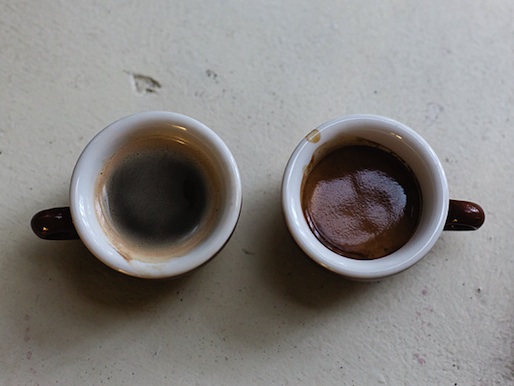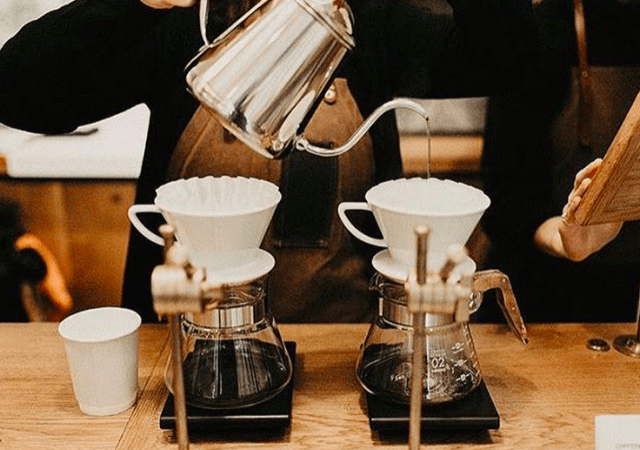One cup of good coffee is enough! Coffee common sense that you may not know!
Professional coffee knowledge exchange more coffee bean information please follow the coffee workshop (Wechat official account cafe_style)
In recent years, the atmosphere of drinking coffee in our country has become more and more popular, and the charm of coffee lies in that it is full-bodied, mellow and relaxing. Today, the editor is here to share some common sense of coffee that may not be known, hoping to provide some help to friends who love coffee.
One: coffee won't all melt when you throw it into the water. The maximum extraction rate of roasted coffee beans is 30% (substances that can be dissolved in water divided by the total weight of coffee powder). This looks like nonsense.
Meaning:
1. Whether it's French pressure, Philharmonic pressure, all kinds of pressure, or espresso. The best extraction rate ranges from 18% to 22%, because there are only about so many good flavors in the coffee, and the rest are basically bad flavors. Insufficient extraction (less than 18%) means that the flavor of coffee is not fully dissolved in water, and excessive extraction (more than 22%) means that the miscellaneous flavor of coffee is easy to blend into the water.
Baristas rack their brains to make the perfect cup of coffee, all based on this. And everyone even each time the taste of coffee will be slightly different, in addition to the extraction rate may be different, but also may be caused by uneven extraction of particles from different regions and sizes of coffee powder.
two。 It is surprising that all our instant coffee can be dissolved in water. It shows that instant coffee has been extracted, but it is only reduced to powder particles in some physical way. Exactly how to do it is outside the scope of discussion here.

2: Coffee is actually part of the fruit. Since coffee is roasted, coffee is in a sense (not absolutely) changed from fruit to dried fruit.
Meaning:
1. The plums and oranges we sometimes drink are actually its precursors, combining the fruit flavors of local environments; the almonds and walnuts we drink are partially caramelized during baking. We drink cocoa (a bitter taste), syrupy (a combination of bitter and sweet), and a deep, charred taste.
2. In view of one point, we understand why coffee is popular with fast roasting. Just like steak, the outside is charred and the inside is tender. There is cocoa and nut flavor brought by caramelization on the outside, and the sweet and sour fruit is still retained inside. This brings a richer, multi-layered flavor to mind.
3. A lot of people pursue flavor theory tirelessly. But the rules of flavor wheel arrangement are ignored.
4. Most importantly, coffee isn't just bitter. At least good coffee is not.
Three: The grinder is the process of turning coffee beans into powder. That's another crap, but...
Meaning:
1. The finer the powder, the more exposed the coffee surface to air and the faster the evaporation time. Italian coffee requires the finest powder, and once ground, most of the flavor is lost after 2 minutes.
2. Why wouldn't anyone recommend a hand-grind mechanism for espresso--because it takes far more than two minutes to shake 20 grams of powder, and your hands break.
3. If the particles of the powder are inconsistent, the same hot water passes through small particles, and the extraction is too much (the surface exposed to water is more), and after large particles, the extraction is not enough (the surface exposed to water is less), which is the above mentioned uneven extraction.
4. The filter of the French press pot is very coarse, so it is required to grind large particles. Therefore, the requirements for the grinder are high, because if the size is not the same, not only will there be the third problem, small particles will penetrate the filter, causing coffee turbidity.
Four: No matter what kind of drink, the most suitable for the public often tastes more balanced. In coffee, the taste balance is mainly reflected in sweet and sour bitterness.
Meaning:
1. Sweet and sour, normal people can feel it. Calm down and you can feel these three flavors.
2. Sour on both sides of the tongue coating is more sensitive, sweet in the tip of the tongue, bitter and then tongue root. Because of the shadow of bad coffee in the past. Many friends try sour coffee for the first time, just want to taste it, a drink to sour, it is easy to give up, at this time may wish to drink, let coffee quickly cover all taste buds in the mouth, sour and bitter neutralization is not so exciting.
3. The taste of coffee is uneven, and normal people can judge it with a little guidance.
4. Some people say that you have to drink 1000 cups of coffee to know how to taste coffee. In fact, a good cup of coffee, coupled with the right guidance, is enough.
END
Important Notice :
前街咖啡 FrontStreet Coffee has moved to new addredd:
FrontStreet Coffee Address: 315,Donghua East Road,GuangZhou
Tel:020 38364473
- Prev

Creating a cup of coffee with the right taste _ mastering extraction is tantamount to mastering the heart method of brewing coffee
Professional coffee knowledge exchange more coffee bean information please follow the coffee workshop (Wechat official account cafe_style) "to learn to drink coffee is not only to explore the outside, to distinguish the differences between coffee, but also a journey to know yourself inward. "to create a cup of coffee with the right taste, at the stage of planting and fruit refinement, the quality of the coffee bean itself has been cast, and all steps since then
- Next

Cognition of coffee composition.-Why is there caffeic acid? good caffeic acid?
Professional coffee knowledge exchange more information about coffee beans please follow the coffee workshop (Wechat official account cafe_style) first: the acid that already exists in fruit is precisely the acid of fruit. The normal entrance of fruit acid should be melted immediately, the acid must be round, and the acid should be able to bring out sweetness and sweetness. Fruit acid is ripe, fruit acid to have a sense of health, Sheng Jin will have the effect of quenching thirst. Fruit acid is necessary
Related
- Beginners will see the "Coffee pull flower" guide!
- What is the difference between ice blog purified milk and ordinary milk coffee?
- Why is the Philippines the largest producer of crops in Liberia?
- For coffee extraction, should the fine powder be retained?
- How does extracted espresso fill pressed powder? How much strength does it take to press the powder?
- How to make jasmine cold extract coffee? Is the jasmine + latte good?
- Will this little toy really make the coffee taste better? How does Lily Drip affect coffee extraction?
- Will the action of slapping the filter cup also affect coffee extraction?
- What's the difference between powder-to-water ratio and powder-to-liquid ratio?
- What is the Ethiopian local species? What does it have to do with Heirloom native species?

